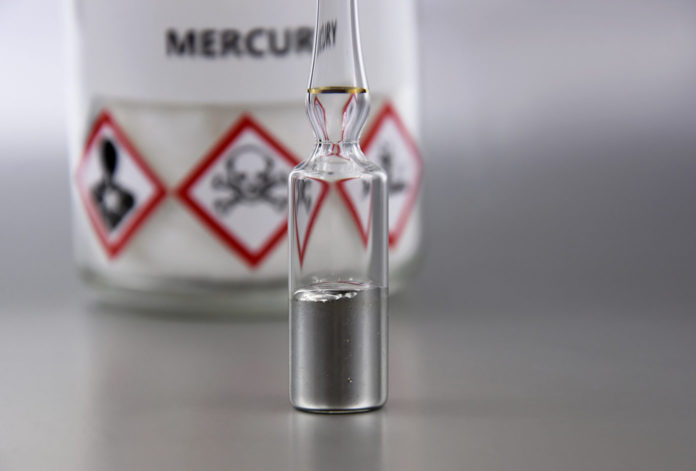The body has a very sophisticated and complex system for producing energy. All the cells of the body can use glucose as a fuel source. Most cells can also use higher energy long-chain fatty acids as a fuel source. Yet, the brain does not use fatty acids directly (but does so indirectly with ketones production, which is generated when glucose levels are low).
When energy production in your cells is low, your body revs up the pathways that produce energy (ATP). Oppositely, when cellular energy levels are high, it reduces the pathways that make energy.
Mercury: The Energy Robber
One factor that interferes with the enzymes required for energy production in your cells is mercury. Mercury accumulation in the body can have many detrimental effects on several systems, including the brain and nervous system, heart, liver, kidney, digestion, and immune system. My focus in this article is the disruption of energy production. Mercury also disrupts the ability of the hormone insulin to transport glucose into your cells for energy production. Studies have demonstrated that a high blood mercury level is significantly associated with Type 2 diabetes prevalence.
Sources of Mercury
Mercury accumulation occurs from consuming mercury-laden fish such as tuna, swordfish, shark, and other large fish. My patients who consume sushi or tuna in other meals almost always have sky-high mercury levels on laboratory testing! These larger fish accumulate mercury from the smaller fish they consume. The small fish accumulate mercury from environmental contamination such as the by-product of coal power plants and industrial mining. After being released into the air, it ends up in the oceans and waterways, where it is converted by plankton and bacteria into a more toxic form of mercury known as methylmercury.
The Environmental Working Group has a good summary of the types of fish and shellfish that are high in mercury as well as those that are safe. In addition to not consuming tuna regularly, one should avoid:
King Mackerel
Marlin
Orange Roughy
Shark
Swordfish\Tilefish
Good choices of omega 3 rich seafood that is low in mercury include:
Wild Salmon
Sardines
Mussels
Rainbow trout
Atlantic mackerel
Oysters
Anchovies
Pollock
Herring
The other source of mercury includes the inorganic mercury as found in amalgam fillings. If you have amalgam fillings, I recommend working with a biological dentist to remove them properly.
Testing and Treatment
If you are concerned about mercury toxicity, then an integrative doctor can perform testing to identify your body burden. If mercury levels are elevated, then specific detoxification protocols can be followed to eliminate the mercury. Of course, one must remove the source of their mercury exposure, such as the diet and/or amalgam fillings.
In addition to specific chelating agents for mercury, I recommend supplementing with Glutathione which has been shown in published studies to increase blood levels of glutathione. Glutathione is a unique natural agent in that it helps the cells, liver, and kidneys to remove mercury. In addition, glutathione supports cellular energy production. I usually have patients take one capsule twice daily on an empty stomach. In more severe cases, we will administer intravenous glutathione.
Dr. Mark Stengler NMD is a bestselling author in private practice in Encinitas, California. His weekly newsletter Dr. Stengler’s Health Breakthroughs, is available at www.americasnaturaldoctor.com

